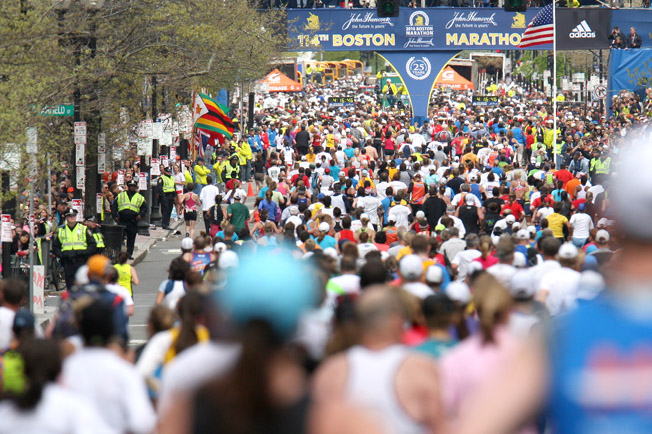Are your feet ready for running this summer?
You might want to think twice before strapping on those traditional clunky sneakers and running around your neighborhood. Every year millions of Americans take up running as a way of getting off the couch and trim the mid-section only to find themselves right back where they started - but this time with back, knee and foot pain!
Learn how incorporating barefoot training prior to your next fitness adventure will have your feet singing a much happier tune.
Passage taken from Barefoot in Boston, by Art Horne
"Looks like mom was right – the cheaper shoes do work just as well, and in fact, might just be safer for you too.
If you are starting to feel like I am picking on traditional shoes and their parent companies well, that is because I am and it is about to get a whole lot worse.
In a study conducted by Marti (1989) in which he provided a questionnaire to over 5000 runners of a popular 16-km race, he discovered that expensive shoes accounted for 123% greater injury frequency than the lowest cost models. In fact, the incidence of injury while the subjects were wearing shoes over $95 were twice as high as for those subjects wearing shoes costing less than $40. There may be a number of other factors associated with injury other than just shoe cost but these results included correction for these other influencing factors such as training mileage and history of previous injury! Marti also notes that injuries were not significantly related to race running, speed, training surface, characteristics of running shoes or relative weight. In other words, the fancier the shoe, the more injuries you can expect from them!
So what do “fancy” shoes have that ordinary shoes do not?
The answer may be found in a 2001 study by McKay. Although McKay’s group did not set out to determine the manufacturing differences between lower end and high end shoes, their findings did point to one feature within many athletic shoes that may very well be to blame. In this study researchers sat courtside and watched over 10,000 recreational basketball participants as they played to determine the rate of ankle injury and examine risk factors of ankle injuries in recreational basketball players. Each participant completed a questionnaire which included questions related to: age, sex, height, weight, protective equipment (ankle brace, mouth guard, etc), shoe type (cut low, med, high), age of shoes, whether the participant performed a warm-up prior to playing, and of course questions identifying their injury history.
After analyzing the data, three risk factors emerged:
1. Previous ankle sprain – those athletes with a previous sprain were almost 5 times more likely to sprain again.
2. Players who did not stretch prior to games were 2.6 times more likely to injure their ankles then those that did.
3. Players wearing air cells in the heels were 4.3 times more likely to injure an ankle compared to those with no air cells in their heels."
BSMPG wishes the over 20,000 runners participating in the 2013 Boston Marathon the very best of luck!!

Register for the 2013 BSMPG Summer Seminar - May 17 & 18th
Early Bird Prices end April 15th so run to a computer after finishing the marathon and sign up to enjoy the discounted prices!






